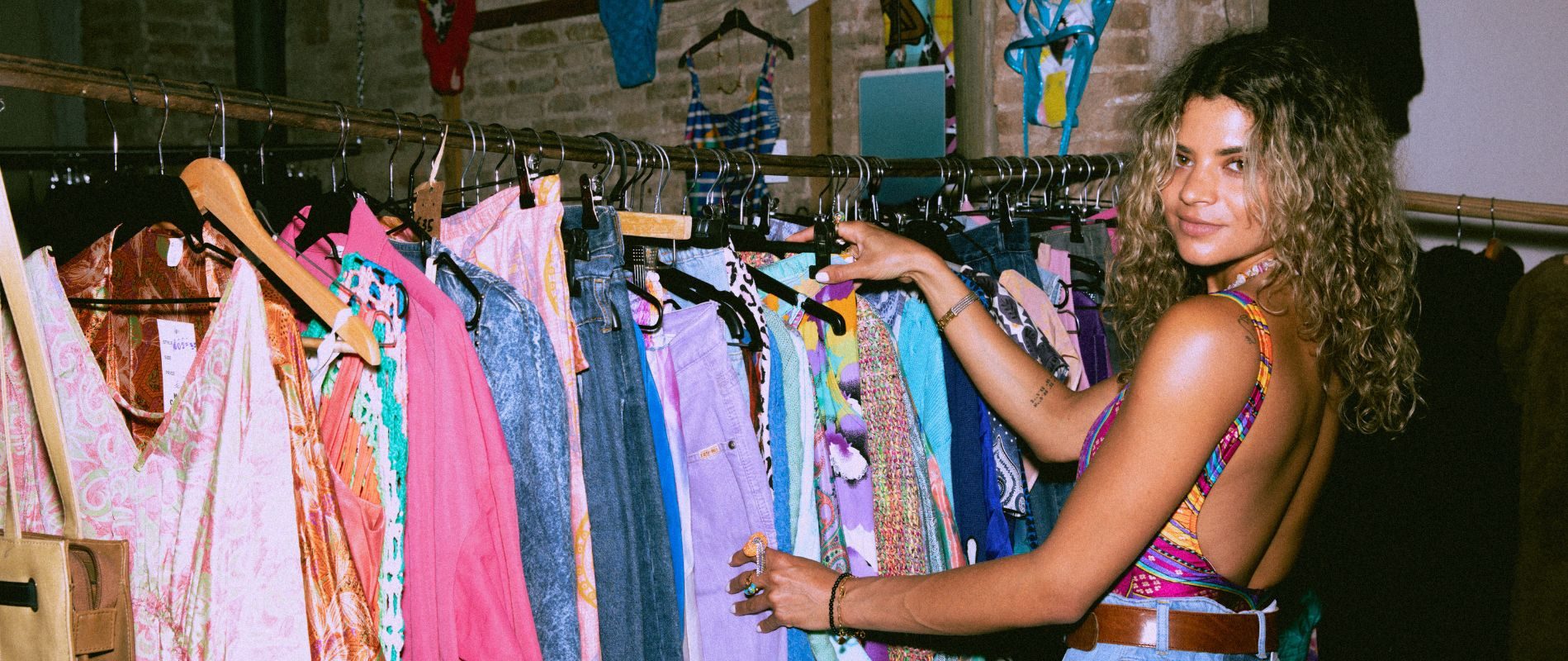Thrifting has evolved from a means of necessity to a beloved pastime for many people. Yes, thrifting is indeed a hobby, and a fulfilling one at that.
Personally, I find immense joy in the treasure hunt of finding unique and vintage items that add character to my wardrobe and home.
One of the most compelling aspects of thrifting is its strong sense of community.
Engaging in this hobby allows me to support local businesses and charitable organizations, fostering a deeper connection with my local area.
Additionally, I’m drawn to the sustainable nature of thrifting.
By choosing to buy second-hand, I contribute to a more sustainable fashion industry, reducing waste and promoting environmental responsibility.
The thrill of the hunt, the joy of discovering hidden gems, and the satisfaction of contributing to sustainability make thrifting a uniquely rewarding experience.
Whether you’re a seasoned thrifter or just starting out, this hobby offers endless possibilities and benefits that go beyond simple acquisition.
The Rise of Thrifting
The rise of thrifting has been shaped by historical shifts and modern digital innovations. Understanding the changes in secondhand markets helps appreciate this growing movement.
Historical Context and Evolution
Thrifting’s historical roots lie in the early 20th century when charitable organizations like Goodwill began collecting and selling donations to support their missions.
Over time, thrifting evolved with the economy.
During economic recessions, the thrift market expanded as people sought affordable goods. The appeal of vintage items also contributed to its growth.
Vintage fashion brought a unique charm that attracted collectors and fashion enthusiasts alike.
The secondhand market exploded with the growing awareness of sustainability.
Consumers started valuing the idea of reusing items, reducing waste, and supporting eco-friendly practices.
This shift in mindset helped position thrifting not just as a budget-friendly option but as a conscientious choice.
The COVID-19 pandemic marked a significant turning point, as economic uncertainty made thrifting more relevant.
People turned to thrift stores to save money, while donations surged as individuals decluttered their homes.
Thrifting in the Digital Age
The digital age transformed thrifting by introducing online platforms like Etsy, which made it easier to find unique secondhand items.
Social media platforms such as Instagram and TikTok played a crucial role in popularizing thrifting among younger generations.
These platforms showcased thrift hauls, DIY fashion projects, and sustainability tips, creating a vibrant community around thrifting.
Algorithms promoted these posts, amplifying their reach and enticing more people to join the movement.
Online thrift stores and apps also emerged, allowing me to browse and purchase secondhand goods without leaving home.
Websites dedicated to thrifting provided tips, trends, and a sense of belonging that’s often missing from traditional retail experiences.
The intersection of technology and thrifting also spurred innovations like virtual thrift swaps, where users exchange items through mail.
This digital shift made thrifting more accessible and appealing, cementing its place in modern consumer culture.
Environmental and Economic Impacts
Thrifting impacts both the environment and our budgets. By choosing secondhand goods, I help reduce waste and conserve resources, while also saving money and encouraging a circular economy.
Sustainability and Eco-Friendliness
Thrifting significantly reduces the carbon footprint associated with the production of new clothing and items.
By choosing secondhand, I contribute to a more sustainable economy, lessening the demands on resources and energy used in manufacturing new goods.
This eco-friendly practice helps in managing waste more effectively, giving a second life to items that might otherwise end up in landfills.
The State of Thrift 2020 Impact Report from Value Village emphasizes that thrifting lowers pollution rates and conserves natural resources like water.
Additionally, thrifting furniture saves wood and decreases the demand for deforestation, which contributes to the loss of biodiversity and increased carbon emissions.
By engaging in this eco-friendly practice, I support efforts to mitigate the detrimental effects of fast fashion on our planet.
Financial Savings and Budgeting
One of the clear advantages of thrifting is the financial savings.
When I shop at thrift stores, I often find quality items at a fraction of the cost of new ones.
This practice allows me to stretch my budget further and allocate funds to other important areas.
In addition to saving money, thrifting encourages a more responsible attitude towards spending.
By valuing secondhand items, I am less likely to contribute to the wastefulness associated with consumer culture.
Thrifting also supports the concept of a circular economy, where items are reused and recycled, reducing the demand for new products and minimizing environmental impact.
Thrifting Culture and Community
Engaging in thrifting goes beyond just finding cheap goods. It fosters community interaction and allows individuals to express their personal style with unique, one-of-a-kind pieces.
The Social Aspect of Thrift Stores
Thrift stores are not just retail spaces; they are hubs for community engagement. Many are operated by charitable organizations, where each purchase supports a broader mission.
When I walk into a thrift store, I often see familiar faces.
There’s a unique sense of camaraderie among frequent thrifters. We exchange tips and locations of the best deals, which enhances the community spirit.
Local exchange of goods makes these spaces vibrant and dynamic.
The interactions I have are genuine, often centered around shared passions for sustainable living and creative repurposing. This creates a sense of belonging that traditional retail stores rarely offer.
Influence on Personal Style and Creativity
Thrifting offers a treasure trove of options for expressing personal style. The distinctive mix of clothing and items available means every find is literally one-of-a-kind.
As a creative individual, thrifting ignites my fashion sense.
Discovering unique finds that no one else owns allows me to build a wardrobe that speaks to my individuality.
For instance, a vintage jacket or an eclectic piece of furniture can become a focal point in my personal presentation.
Social media influencers showcase their thrifted clothing and decor, inspiring me and many others to see potential in items that might otherwise be overlooked.
This fusion of creativity with sustainability bolsters the appeal of thrifting, making it both a hobby and a lifestyle for many.
Practical Tips for Successful Thrifting
To optimize your thrifting experience, focus on locating high-quality items, timing your store visits strategically, and maximizing savings through discounts and deals.
Each approach will help enhance your chances of finding hidden gems and getting the best value for your money.
Finding Quality Pieces
Quality should always be a priority. When I thrift, I closely inspect items for wear and tear.
Look at seams, zippers, and buttons to ensure they are intact. Pay attention to fabric quality; natural fibers like cotton, wool, or silk tend to last longer.
I also research brand names known for durability. This helps distinguish high-quality pieces from fast fashion.
Keep an open mind, as you might find great items in unexpected categories. Patience is crucial. Sometimes, it takes multiple visits to uncover hidden gems.
Timing Your Visits
Timing can significantly impact your thrifting success.
I prefer visiting thrift stores early on weekdays. Stores are less crowded, and I have a better selection, especially after weekend donations.
The end of the month is another good time to visit. People usually donate more items when they move.
Some stores even restock on specific days, so asking employees about restocking schedules can give you an edge.
Navigating Discounts and Deals
To maximize savings, I always search for discounts and deals.
Many thrift stores offer special promotions on certain days, like half-off sales or discounts on specific colored tags.
It’s wise to sign up for store newsletters or follow them on social media to stay informed about upcoming sales.
Bringing cash helps to avoid potential credit card minimums and can sometimes get you better deals.
Implementing these strategies ensures I get the best value on my thrifting treasure hunts.

